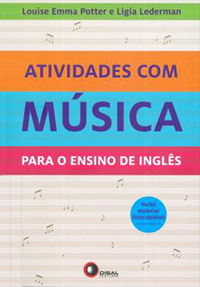By - Elaine Hodgson

It’s 5:40pm and you’re heading home after teaching your kids and teens groups. You’re dreaming about a hot bath and a hot meal, hoping traffic won’t be too chaotic and you’ll get home in time to watch some Netflix or maybe go to the gym after a long day. However, just when you’re putting your books away and getting ready to leave, the coordinator rushes into the room: one of your colleagues won’t be able to come and teach the 6pm group and an impromptu substitute is needed to save the day. That saviour might be you!
This happened to me on countless occasions, sometimes in the evening, sometimes when the phone rang early in the morning. You have to make a quick decision and then plan what to do in the lesson while you grab something to eat. If this has never happened to you, it certainly will if you work in a language institute.
Very few professionals would deny the importance of planning, and you will find a considerable number of models and templates with this purpose. Some are so detailed that the effort and hours spent writing the plan can be ten times more than those spent teaching the lesson itself; others will be short and simple, more of a “list before packing for a trip” as suggested by Katherine Bilsborough (see link below).
It is unlikely that courses aimed at language teachers will fail to approach the importance of a lesson plan or to deal with preparing one. However, what do you do when you simply have no time to work on a proper plan? It is unlikely that you will learn this in any course and the chances are that you may end up having to come up with a plan for a last-minute lesson on your own. Here is a list of a few things to consider when such a situation arises.
Identify the aim of the lesson - and stick to it!
Nobody leaves home without knowing their destination and at least a rough idea of how to get there. The same applies to lessons, no matter if it is a language systems lesson (i.e. grammar and vocabulary) or a skills lesson. You can’t just have, for example, reading as your aim, but what you expect learners to have learnt by reading. This was the first and possibly one of the most precious lessons I learned when I trained to be a teacher: What’s the aim of the lesson? If you know that, all the other questions about how to achieve this aim will be more easily answered. So, if you have no time to plan, ask yourself what you expect students to have learnt at the end of your lesson or check if that’s been decided by the teacher you are subbing for.
Follow the teacher’s guide
Teacher’s guides (TGs) are very often underrated. It is not uncommon to hear teachers say that once you acquire some experience and learn the ropes, you do not need to refer to TGs anymore except to look up answers and tapescripts. However, those teachers might be missing an opportunity to teach a cohesive and productive lesson. It might not be the lesson of your dreams, but at least the basic structure and the aim will be there. If you are called for a last-minute substitution and are lucky enough to have a TG with a lesson-by-lesson plan, use it.
Build your own repertoire of activities
This might be particularly useful for warm-up, winding-down or time-filler activities. And this repertoire will help you gain some time to decide on how you want to conduct the main parts of the lesson. Preferably, these activities should be material-free so that you don’t have to worry about knowing how many students you have in class, or about making copies. For instance, to start with, organise students in pairs or in groups of three and write the topic of the lesson on the board (e.g. Love or Living Abroad) and ask students to brainstorm words they associate with the topic for a couple of minutes. Then get the class’ attention and write the words they have brainstormed in their groups on the board. This is an excellent way of pre-teaching or revising vocabulary before a reading or listening text and also of dealing with pronunciation. If you’re substituting the teacher of a level which is more advanced than the ones you usually teach, and you feel insecure about dealing with vocabulary and pronunciation (a situation I have witnessed more than once), ask students to write the words on the board themselves and check the pronunciation in a dictionary.
Have a ‘magic’ folder
One of the things I always think I should have done was to keep my own folder of activities I could have used in an emergency. However, the school where I started my career used to have folders per level and per topic and per level, organised by teachers who had prepared something they thought worked well in class. These folders, I remember, proved to be extremely useful when an emergency teacher was needed. Having your own ‘magic folder’ can help you feel more confident as you’d know all the tasks and activities there, but suggesting the organisation of folders that could be used by all teachers at the school can be seen as a positive initiative.
Write your ‘post-it’ plan
And stick it on your desk. This will help you keep track of the steps of the lesson and, depending on your style, help you feel more confident and better prepared. Even if you have just a couple of minutes to plan, writing a few notes can be really helpful. If you’re not at the school when you are called to sub for a friend, you can think of the steps on your way to the school and write your ideas down as soon as you arrive. Something that can also be useful is to write the plans for your regular lessons, either simple and objective, or long and detailed, and keep them in the book you are using. If you are called to substitute for a level you already teach, you know you’ll have a plan there. You will probably have to make a few changes and adapt but the main idea, the aim of the lesson, will be there already. This can save you precious minutes and also lower your anxiety if you tend to get anxious when teaching groups which are not yours.
Planning has to do with personal style and experience. Some teachers will take hours preparing activities as they feel better and more confident when they have a lengthy and more detailed plan at hand. Others will write minimalist plans in a bullet-point style. It’s possible that in time, you’ll get more confident and learn to be more flexible, not to mention that you tend to know the materials being used better and feel totally prepared your lesson with a short plan. Emergencies, however, will happen to all of us, no matter our style, and knowing how to react to them certainly make you more resourceful and help us become a better teacher. So, be confident, look confident and substitute your colleague with no regrets.
References:
Bilsborough, K. Lesson plans: less is more. Available at: https://www.teachingenglish.org.uk/blogs/katherine-bilsborough/katherine-bilsborough-lesson-plans-%E2%80%93-less-more. Accessed on March 1st, 2019.
Bio
Elaine Hodgson has 29 years experience in English Language Teaching in different educational settings both in the public and private sectors. Since 2010 she has been writing a wide variety of EFL material for publishers in Brazil, Germany, Mexico and the UK. She is also a tutor and dissertation supervisor for the MA Distance Course in Applied Linguistics and TEFL for the University of Birmingham (UK). You can contact her at elainecchodgson@gmail.com or via her website www.elainehodgsonelt.com.
LIVRO RECOMENDADO
